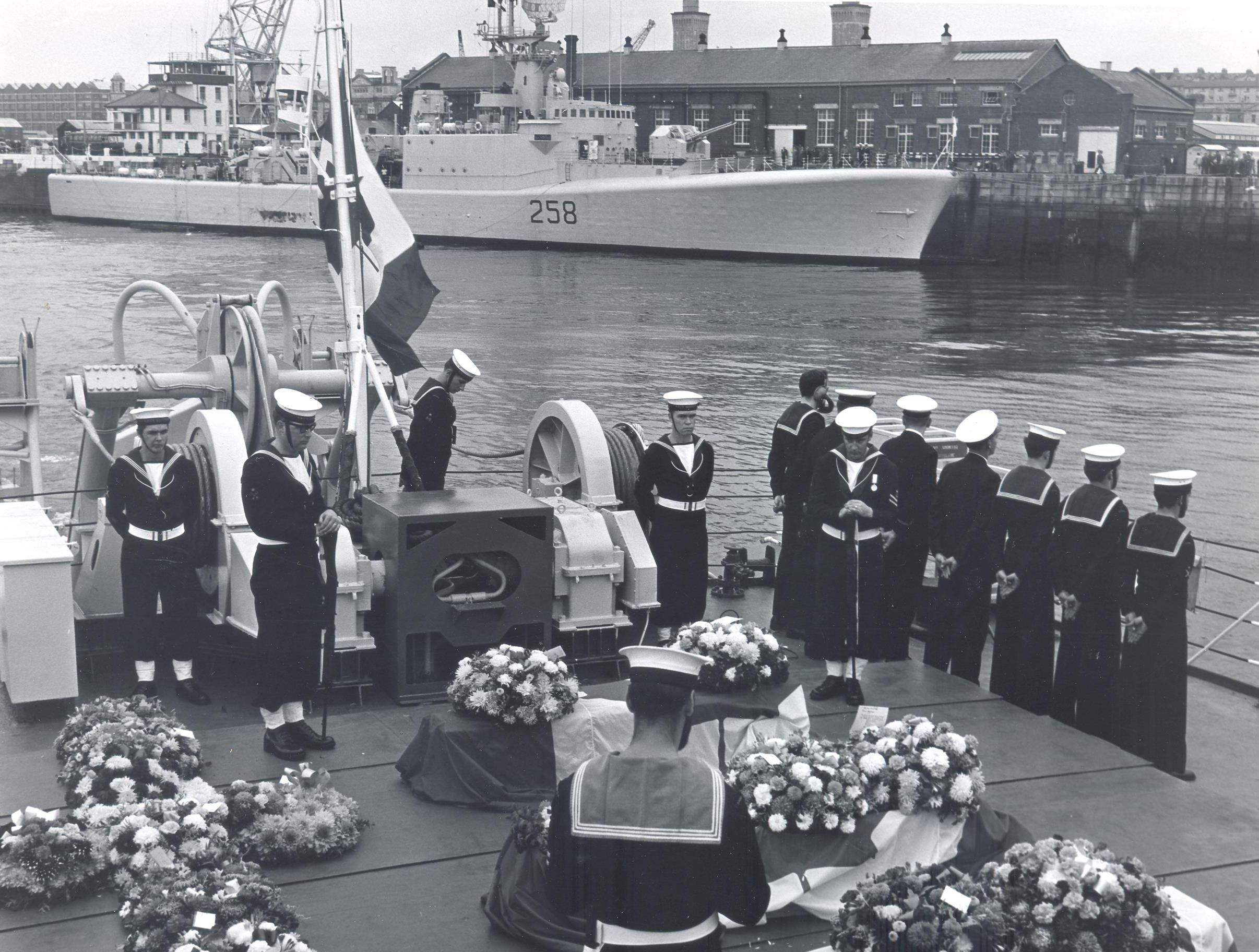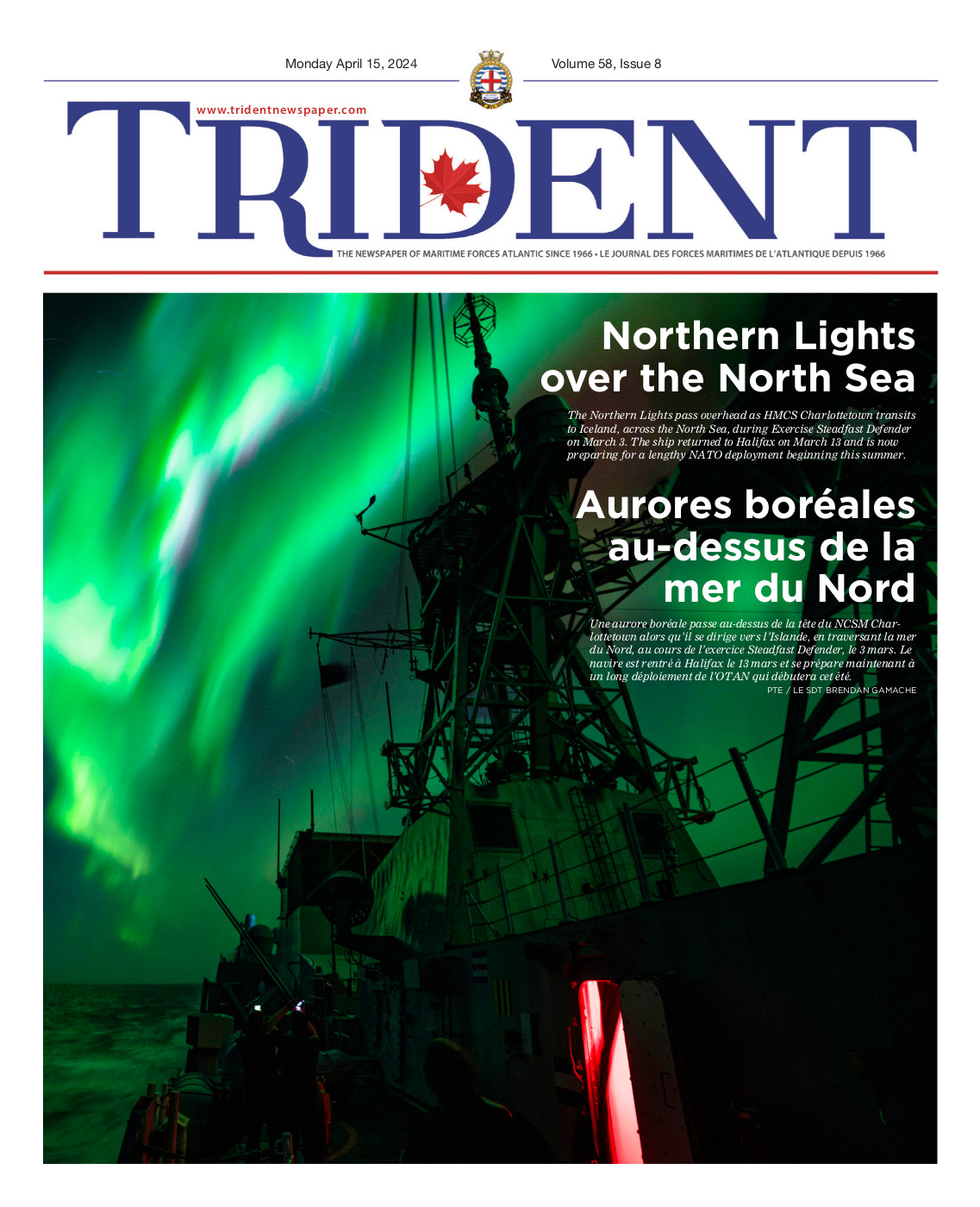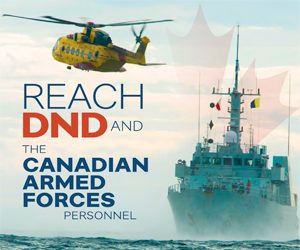
MND
We are as One: Remembering HMCS Kootenay (DDE 258)
By Jennifer Gamble,
Curator, Naval Museum of Halifax
“I have had an explosion in my engine room, I require immediate assistance!”
Flash message from Cdr Norton at 8:36 am, October 23, 1969
08:21, on the morning of October 23, 1969, on board HMCS Kootenay: an explosion occurred. The blast and intense fire would become known as one of the worst peacetime accidents in the history of the Royal Canadian Navy.
On October 22, after taking part in a series of naval exercises in United Kingdom waters, Kootenay, alongside other Canadian warships, departed Plymouth, England to sail home to Halifax. While on route in the North Atlantic they were detached from the main force to carry out routine full power engine trials. Being a routine trial on a relatively calm morning, no one could have ever predicted what was to come next.
Approximately 20 minutes into the trials, the ship’s starboard gearbox malfunctioned, reached an estimated temperature of 650C, and exploded. An aggressive fire, heavy smoke and hot gases moved quickly throughout the ship, spreading from the engine room to the main cafeteria and passageways above. The smoke was so thick and dangerous that sailors had to crawl their way through the ship. The crew responded immediately by providing first aid and trying to fight the fire.
Most of the firefighting equipment was stored near the engine room and was badly damaged from the explosion. Helicopters from the nearby task force quickly flew additional firefighting equipment and crew to Kootenay. Dozens of injured sailors suffering burns and severe smoke inhalation were evacuated to HMCS Bonaventure. Despite the challenges, the fire was brought under control, and was extinguished within two and a half hours. Due to the quick actions of the crew not only was the ship saved, but also the lives of the majority of their shipmates. Sadly, nine Kootenay members did not survive the incident.
In the months following the explosion, a formal board of inquiry and a full technical investigation was launched. What could have caused the starboard gearbox to explode? In December 1969 the investigation was completed. Following a series of interviews and the examination of technical reports, it was concluded that human error had caused the explosion. Specifically, the faulty installation of the gearbox during a refit four years earlier.
Damaged from the fire, Kootenay was towed back to Plymouth and the Royal Canadian Navy began preparations for funeral services for the members who died. At the time, Canadian military policy stated that personnel who lost their lives overseas must be buried overseas: either by interment in a cemetery in England or burial at sea. This policy was originally established during the First World War when it was impossible to send remains of personnel home. Four families chose burial at sea.
The decision not to repatriate the remains of the nine sailors who were lost angered many Canadians. Shortly after the Kootenay explosion, Parliament changed the regulations so that remains of all military fatalities are now returned home to their families.
Three years later, six crew members received medals honouring their bravery during the incident. Chief Petty Officer V.O. Partanan was posthumously awarded the Cross of Valour. This medal will soon be on display at the Naval Museum of Halifax in an exhibit to share the story not only of the explosion, but it will also reflect on the actions taken by the crew.
Without hesitation Kootenay’s crew responded to the explosion with great courage and skill. Without their heroic actions, the ship and lives of many more crew members would have likely been lost.
In times of tragedy and emergency, our Canadian Armed Forces have always respond quickly and capably. The RCN’s response to Kootenay’s explosion is a reflection of not only how well trained our personnel are, but also a reflection of the unity of our forces. The Royal Canadian Navy will never forget Kootenay or the men that were lost on October 23, 1969.
Lest We Forget:
AB Nelson Murray Galloway
AB Michael Alan Hardy
LS Pierre Serge Bourret
LS Thomas Gordon Crabbe
LS Gary Wayne Hutton
PO2 Lewis John Stringer, CV, CD
PO1 Eric George Harman, CD
CPO2 William Alfred Boudreau
CPO1 Vaino Olavi Partanen, CV, CD






